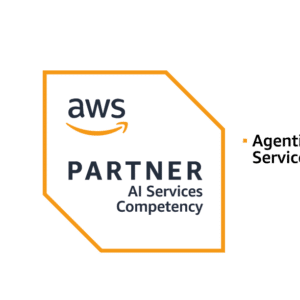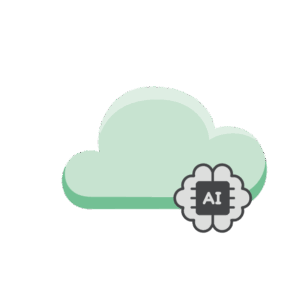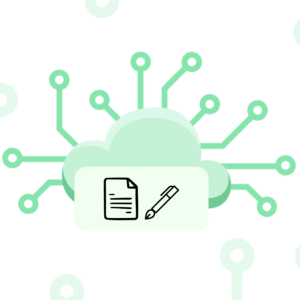
Using the AWS cloud inefficiently can hurt a business’s finances. Studies show that companies waste about 35% of their cloud budget. This is mainly due to poor optimization methods. It highlights the need for effective strategies to improve AWS performance and cut costs.
This section explores various strategies and methods to enhance performance, reduce expenses, and boost efficiency in your AWS infrastructure. It’s essential to understand your AWS bill, adopt a consumption model, and use scalable cloud designs. These steps help maximize AWS usage, reduce waste, and optimize resource allocation.
Key Takeaways:
- Implementing AWS cloud optimization strategies is essential for maximizing efficiency and reducing costs.
- Understanding your AWS bill is vital to identify areas for cost optimization.
- Adopting a consumption model allows you to pay only for the resources you use, maximizing business value.
- Utilizing scalable cloud architecture improves operational efficiency and resource allocation.
- Optimizing your AWS cloud environment requires a combination of best practices, techniques, and modernization of applications.
Understanding AWS Cloud Cost Management
Optimizing AWS cloud usage involves critical cost management. By managing costs effectively, your cloud infrastructure can stay efficient and budget-friendly. We will explore tools and techniques for understanding and managing AWS cloud costs.
Interpreting Your AWS Bill with the Billing Dashboard
The AWS Billing Dashboard is key for managing costs. It provides a detailed view of your monthly expenses and forecasts. This allows you to closely monitor spending and find cost-saving opportunities through analyzing AWS usage.
Analyzing AWS Usage and Spending Patterns with Cost Explorer
The Cost Explorer is a valuable analysis tool. It offers a clear, visual look at your AWS usage and spending. You can spot trends, optimize resource usage, and make informed decisions to reduce costs effectively.
Monitoring and Managing AWS Costs Proactively with AWS Budgets
AWS Budgets are essential for proactive cost management. You can set budgets and receive alerts if you’re over budget. This enables quick adjustments to keep spending in check.
Using the AWS Billing Dashboard, Cost Explorer, and AWS Budgets together, you can effectively manage your AWS costs. They provide the visibility and insights needed for informed decisions, driving cost optimization in your AWS setup.
| Tools |
Benefits |
| Billing Dashboard |
Provides an overview of monthly costs and forecasts. |
| Cost Explorer |
Enables detailed analysis of AWS usage and spending patterns. |
| AWS Budgets |
Proactively monitors and manages costs with notifications and alerts. |
Strategic IT Planning and Evaluation
Strategic IT planning and evaluation are critical for maximizing your AWS cloud setup. By aligning your IT strategies with business goals and evaluating your tech and apps, you can identify areas for improvement. This allows you to create a plan to cut costs smartly.
Exploring strategic IT planning means deeply examining your tech, apps, and workflows. This aims to reduce costs and achieve business objectives. Assessing your current IT setup and your organization’s needs is a good starting point. This phase identifies opportunities for improvement and outlines the necessary steps to enhance your AWS environment.
Choosing which apps and tasks to move to the AWS cloud is critical. Review your apps to determine if they are suitable for migration and the benefits it can bring. Consider performance needs, data security, scalability, and cost savings.
It’s also important to evaluate the expenses of your IT setup. Look into the effectiveness of your IT spending and seek opportunities to reduce costs. This involves analyzing how you use AWS, usage rates, and resource allocation.
By thoroughly examining your IT setup and ways of working, you can plan to reduce costs in your AWS environment. This plan should outline actions and projects to decrease costs, enhance performance, and increase efficiency.
Adopting a Consumption Model to Reduce Cloud Costs
Optimizing AWS cloud usage and cutting costs is key for many businesses. A consumption model is an excellent approach. It lets you pay solely for used resources, reducing any wasted spend. Understanding pay-as-you-go pricing and the value of flexible resource provisioning is essential. This knowledge helps in cost-effectiveness and maximizing AWS usage.
Maximizing Business Value with Pay-as-You-Go Pricing
The AWS model’s pay-as-you-go feature saves money efficiently. It means no hefty upfront payments. You only pay for what you use. This model lets your expenses match your needs, maximizing how you use your funds.
It also offers control over costs by adjusting resources as necessary. You can scale up for busy times or down for quiet periods. This balance ensures you’re efficient without overpaying.
More importantly, you’re free to try new services without long-term financial lock-ins. This approach fosters innovation, allowing for cost-effective, tailored solutions.
Ensuring Flexible Resource Provisioning for Demand Variability
Variable demands require the ability to scale resources quickly. With this consumption model, that flexibility is key. It ensures your resources always match business needs in real-time.
Techniques like auto-scaling help keep your resources optimal without manual intervention. This prevents both under and over-provisioning, saving you money.
Quick response to upticks or dips in demand is critical for satisfaction and efficiency. Being able to scale on demand ensures your cloud environment is both effective and affordable.
By embracing this model, you gain both in savings and efficiencies. Paying solely for what you use and adjusting resources on the fly meets your business’s needs effectively.
AWS Cloud Optimization Strategies
We will explore specific strategies for optimizing AWS cloud environments. These strategies include the best practices and techniques. Their goal is to enhance performance while cutting costs. Boosting your AWS cloud setup’s efficiency and cost-effectiveness is the key outcome.
Optimizing your infrastructure is a critical step. By adhering to AWS best practices, your resources are used more efficiently. This leads to lower costs and better performance.
Using AWS’s cost-saving features is another key point. AWS offers tools and services for infrastructure optimization and cost reduction. Employing these solutions cuts expenses significantly. This is achieved without compromising your applications’ reliability or performance.
Following AWS’s best practices in infrastructure optimization is vital. These practices ensure your environment is well-configured. They help you fully leverage AWS’s capabilities and features.
Efficient AWS cloud management depends on incorporating several strategies and adhering to best practices. By improving your infrastructure, using cost-saving features, and following AWS’s guidelines, you can maximize efficiency and reduce costs in your AWS cloud projects.
Performance Optimization Techniques for AWS Services
Performance optimization significantly impacts AWS cloud efficiency. This article will explore strategies for improving the performance of various AWS services. We’ll discuss using Amazon EC2 Spot Instances to cut costs and the benefits of upgrading your apps to utilize AWS-designed silicon. These steps will enhance your AWS services’ performance and reduce costs.
Leveraging Amazon EC2 Spot Instances for Cost-Effective Workloads
Utilizing Amazon EC2 Spot Instances is a top technique to optimize performance. Spot Instances let you bid on unused EC2 capacity, allowing for workloads at lower costs than on-demand. By incorporating spot instances, you tap into AWS’ economy-priced capacity, perfect for flexible, scalable, or fault-tolerant apps. With smart planning, you can save significantly without losing performance quality.
Modernizing Applications to Utilize AWS Designed Silicon for Better Price Performance
Upgrading applications to use AWS-designed silicon significantly improves cost efficiency. AWS provides instances fine-tuned for superior price and performance via AWS Graviton2 processors. These processors, with ARM architecture, boost your app’s performance while cutting costs. By shifting to these instances, you enhance your services’ power, reducing expenses.
Utilizing Scalable Cloud Architecture for Operational Efficiency
In today’s fast-paced digital landscape, companies rely heavily on cloud infrastructure. Achieving operational efficiency in AWS environments requires a scalable architecture. This approach boosts performance, reduces costs, and enhances overall efficiency.
Scalable cloud design focuses on creating a dynamic environment that adapts to workload demands. It allows companies to adjust resources as needed, scaling operations up or down. This ensures systems operate smoothly, even during peak demand periods.
Creating a scalable cloud setup involves several key strategies:
- Horizontal Scaling: Adds or removes resources horizontally to meet changing demands. This supports increased traffic and maintains high performance. It also enhances fault tolerance by eliminating single points of failure.
- Auto Scaling: Automatically adjusts resource capacity, like EC2 instances, based on set conditions. Setting scaling policies ensures your system grows or shrinks with demand. This smartly uses resources, cutting down unnecessary costs.
- Containerization: Tools like Docker bundle apps and their needs into portable containers. Containers are flexible and let you deploy apps easily in different settings. This improves resource use and simplifies cloud management.
- Serverless Computing: AWS Lambda’s serverless model runs code without the need to handle servers. It allows you to focus on code, reacting to events and paying for use time only. Serverless removes infrastructure management, saving costs and boosting efficiency.
Using these approaches in a scalable cloud setup enhances your infrastructure. It cuts costs and boosts efficiency significantly. Scalable structures ensure smooth scaling and better performance, fitting your AWS cloud to your business’s growth.
Conclusion
Implementing AWS cloud optimization strategies is key to efficiency and cost reduction. It involves understanding your AWS bill. It also uses cost management tools like the AWS Billing Dashboard and Cost Explorer.
Further, strategic IT planning plays a major role. It helps in identifying improvement areas and devising optimization plans. Aligning IT strategies with business goals and evaluating your infrastructure, applications, and workflows leads to cost optimization.
Adopting a consumption model, like pay-as-you-go, and ensuring flexibility in resource provision are vital. Paying for the resources used and adjusting based on demand reduces costs effectively.
Lastly, leveraging Amazon EC2 Spot Instances and updating applications for AWS-designed silicon enhance performance.
Scalable cloud architecture also increases operational efficiency. These steps lead to optimized AWS performance at reduced costs.
FAQ
What are AWS cloud optimization strategies?
AWS cloud optimization strategies aim to maximize efficiency within AWS cloud environments. These strategies involve managing costs, strategic IT planning, and utilizing scalable architecture. They also include adopting a consumption model and employing performance optimization techniques.
How can I analyze my AWS usage and spending patterns?
For a detailed look at your AWS usage and spending, turn to the Cost Explorer tool. This resource allows you to closely monitor your costs, spot trends, and find ways to optimize spending.
Why is strategic IT planning and evaluation important for AWS cloud optimization?
Strategic IT planning is vital for AWS optimization. It ensures your IT aligns with business objectives and identifies areas to enhance. By examining your setup thoroughly, you can cut costs and hit your business targets.
How can I ensure flexible resource provisioning in the AWS cloud?
Use auto-scaling and elasticity in AWS for adaptable resource provisioning. These tools enable your resources to flex according to changing demands. This dynamic adjustment enhances resource use and cost efficiency.
What are some AWS cloud optimization strategies?
Key AWS optimization strategies involve infrastructure fine-tuning and cost-saving features. They also include efficient architecture use and leveraging serverless technologies. Implementing caching can further enhance efficiency and bring down costs.
What is scalable cloud architecture and why is it important for operational efficiency?
Scalable cloud architecture is about designing flexible cloud infrastructures. It adjusts to changes in workload demands. This adaptation optimizes resource use, enhances efficiency, and supports seamless operation at various demand levels.
Source Links
fficient use of the AWS cloud can significantly impact a business’s finances. Studies reveal that companies misuse about 35% of their cloud budget. This is mainly because of weak optimization methods. It underlines the critical need to apply efficient strategies. These strategies can make your AWS cloud setup perform better and save costs.
This portion dives into several strategies and methods. These will help you boost performance, cut expenditure, and improve efficiency in your AWS infrastructure. It’s crucial to know your AWS bill, embrace a consumption model, and employ scalable cloud designs. These steps let you make the most of AWS, reduce waste, and improve how you use resources.
Key Takeaways:
- Implementing AWS cloud optimization strategies is crucial for maximizing efficiency and reducing costs.
- Understanding your AWS bill is vital to identify areas for cost optimization.
- Adopting a consumption model allows you to pay only for the resources you use, maximizing business value.
- Utilizing scalable cloud architecture improves operational efficiency and resource allocation.
- Optimizing your AWS cloud environment requires a combination of best practices, techniques, and modernization of applications.
Understanding AWS Cloud Cost Management
Optimizing AWS cloud usage involves critical cost management. By managing costs effectively, your cloud infrastructure can stay efficient and budget-friendly. We will delve into tools and techniques for understanding and managing AWS cloud costs.
Interpreting Your AWS Bill with the Billing Dashboard
The AWS Billing Dashboard is crucial for managing costs. It offers a detailed look at your monthly expenses and forecasts. This allows you to watch your spending closely and find areas for cost savings through analyzing AWS usage.
Analyzing AWS Usage and Spending Patterns with Cost Explorer
The Cost Explorer is a valuable analysis tool. It looks into your AWS usage and spending in a clear, visual way. You can spot trends, optimize resource usage, and make smart decisions to reduce costs effectively.
Monitoring and Managing AWS Costs Proactively with AWS Budgets
AWS Budgets are key for proactive cost management. You can set budgets and get alerts if you’re going over. This helps you make quick changes to keep your spending under control.
Using the AWS Billing Dashboard, Cost Explorer, and AWS Budgets together, you can get a handle on your AWS costs. They offer the visibility and insights required for making informed decisions. This drives cost optimization in your AWS setup.
| Tools |
Benefits |
| Billing Dashboard |
Provides an overview of monthly costs and forecasts. |
| Cost Explorer |
Enables detailed analysis of AWS usage and spending patterns. |
| AWS Budgets |
Proactively monitors and manages costs with notifications and alerts. |
Strategic IT Planning and Evaluation
Strategic IT planning and evaluation are key in getting the most from your AWS cloud setup. By merging your IT tactics with business goals and checking your tech and apps, you find areas to boost. You can then craft a plan to cut costs smartly.
Delving into strategic IT planning means deeply looking at your tech, apps, and workflows. This aims to cut costs and reach business aims. Assessing your current IT scene and your org’s needs gets you started. This phase finds chances for betterment and the right steps to sharpen your AWS world.
Choosing which apps and tasks should move to the AWS cloud is critical. Review your apps to see if they’re fit for moving and what benefits it could bring. Think about performance needs, data safety, scalability, and trimming costs.
It’s also vital to weigh the expenses of your IT setup. Look into how effective your IT spending is and seek chances to slash costs. This involves checking how you use AWS, use rates, and resource spread.
By fully examining your IT setup and ways of working, you can plan to slash costs in your AWS space. This outline should detail actions and projects to drop costs, boost performance, and ramp up efficiency.
Adopting a Consumption Model to Reduce Cloud Costs
Optimizing AWS cloud usage and cutting costs is key for many businesses. A consumption model is an excellent approach. It lets you pay solely for used resources, reducing any wasted spend. Understanding pay-as-you-go pricing and the value of flexible resource provisioning is essential. This knowledge helps in cost-effectiveness and maximizing AWS usage.
Maximizing Business Value with Pay-as-You-Go Pricing
The AWS model’s pay-as-you-go feature saves money efficiently. It means no hefty upfront payments. You only pay for what you use. This model lets your expenses match your needs, maximizing how you use your funds.
It also offers control over costs by adjusting resources as necessary. You can scale up for busy times or down for quiet periods. This balance ensures you’re efficient without overpaying.
Moreover, you’re free to try new services without long-term financial lock-ins. This approach fosters innovation, allowing for cost-effective, tailored solutions.
Ensuring Flexible Resource Provisioning for Demand Variability
Variable demands require the ability to scale resources quickly. With this consumption model, that flexibility is key. It ensures your resources always match business needs in real-time.
Techniques like auto-scaling help keep your resources optimal without manual intervention. This prevents both under and over-provisioning, saving you money.
Quick response to upticks or dips in demand is crucial for satisfaction and efficiency. Being able to scale on demand ensures your cloud environment is both effective and affordable.
By embracing this model, you gain both in savings and efficiencies. Paying solely for what you use and adjusting resources on the fly meets your business’s needs effectively.
AWS Cloud Optimization Strategies
We will explore specific strategies for optimizing AWS cloud environments. These strategies include the best practices and techniques. Their goal is to enhance performance while cutting costs. Boosting your AWS cloud setup’s efficiency and cost-effectiveness is the key outcome.
Optimizing your infrastructure is a critical step. By adhering to AWS best practices, your resources are used more efficiently. This leads to lower costs and better performance.
Using AWS’s cost-saving features is another crucial point. AWS offers tools and services for infrastructure optimization and cost reduction. Employing these solutions cuts expenses significantly. This is achieved without compromising your applications’ reliability or performance.
Following AWS’s best practices in infrastructure optimization is vital. These practices ensure your environment is well-configured. They help you fully leverage AWS’s capabilities and features.
Efficient AWS cloud management depends on incorporating several strategies and adhering to best practices. By enhancing your infrastructure, utilizing cost-saving features, and following AWS’s guidelines, you can maximize efficiency and reduce costs in your AWS cloud projects.
Performance Optimization Techniques for AWS Services
Performance optimization significantly impacts AWS cloud efficiency. This article will delve into strategies for enhancing the performance of various AWS services. We’ll look at using Amazon EC2 Spot Instances to cut costs and the benefits of upgrading your apps to utilize AWS-designed silicon. These steps will enhance your AWS services’ performance and reduce costs.
Leveraging Amazon EC2 Spot Instances for Cost-Effective Workloads
Utilizing Amazon EC2 Spot Instances is a top technique to optimize performance. Spot Instances let you bid on unused EC2 capacity, allowing for workloads at lower costs than on-demand. By incorporating spot instances, you tap into AWS’ economy-priced capacity, perfect for flexible, scalable, or fault-tolerant apps. With smart planning, you can save significantly without losing performance quality.
Modernizing Applications to Utilize AWS Designed Silicon for Better Price Performance
Upgrading applications to use AWS-designed silicon significantly improves cost efficiency. AWS provides instances fine-tuned for superior price and performance via AWS Graviton2 processors. These processors, with ARM architecture, boost your app’s performance while cutting costs. By shifting to these instances, you enhance your services’ power, reducing expenses.
Utilizing Scalable Cloud Architecture for Operational Efficiency
In our quickly evolving digital world, companies look to cloud infrastructure for core support. Operational efficiency in AWS environments demands a scalable architecture. It boosts performance, cuts costs, and increases overall efficiency.
Scalable cloud design is about creating a fluid environment that adjusts easily to workload needs. It lets companies shift resources as required and scales operations up or down. This approach optimizes resource use and ensures systems run smoothly, even at peak demand times.
Designing a scalable cloud setup involves several key strategies:
- Horizontal Scaling: Adds or removes resources horizontally for changing demands. This helps support more traffic and keeps performance high. It also boosts fault tolerance in your AWS setup by removing single points of failure.
- Auto Scaling: Automatically adjusts resource capacity, like EC2 instances, based on set conditions. Setting scaling policies ensures your system grows or shrinks with demand. This smartly uses resources, cutting down unnecessary costs.
- Containerization: Tools like Docker bundle apps and their needs into portable containers. Containers are flexible and let you deploy apps easily in different settings. This improves resource use and simplifies cloud management.
- Serverless Computing: AWS Lambda’s serverless model runs code without the need to handle servers. It allows you to focus on code, reacting to events and paying for use time only. Serverless removes infrastructure management, saving costs and boosting efficiency.
Using these approaches in a scalable cloud setup enhances your infrastructure. It cuts costs and boosts efficiency significantly. Scalable structures ensure smooth scaling and better performance, fitting your AWS cloud to your business’s growth.
Conclusion
Implementing AWS cloud optimization strategies is key to efficiency and cost reduction. It involves understanding your AWS bill. It also uses cost management tools like the AWS Billing Dashboard and Cost Explorer.
Furthermore, strategic IT planning plays a major role. It helps in identifying improvement areas and devising optimization plans. Aligning IT strategies with business goals and evaluating your infrastructure, applications, and workflows leads to cost optimization.
Adopting a consumption model, like pay-as-you-go, and ensuring flexibility in resource provision are vital. Paying for the resources used and adjusting based on demand reduces costs effectively.
Finally, leveraging Amazon EC2 Spot Instances and updating applications for AWS-designed silicon enhance performance.
Scalable cloud architecture also increases operational efficiency. These steps lead to optimized AWS performance at reduced costs.
FAQ
What are AWS cloud optimization strategies?
AWS cloud optimization strategies aim to maximize efficiency within AWS cloud environments. These strategies involve managing costs, strategic IT planning, and utilizing scalable architecture. They also include adopting a consumption model and employing performance optimization techniques.
How can I analyze my AWS usage and spending patterns?
For a detailed look at your AWS usage and spending, turn to the Cost Explorer tool. This resource allows you to closely monitor your costs, spot trends, and find ways to optimize spending.
Why is strategic IT planning and evaluation important for AWS cloud optimization?
Strategic IT planning is pivotal for AWS optimization. It ensures your IT aligns with business objectives and identifies areas to enhance. By examining your setup thoroughly, you can cut costs and hit your business targets.
How can I ensure flexible resource provisioning in the AWS cloud?
Use auto-scaling and elasticity in AWS for adaptable resource provisioning. These tools enable your resources to flex according to changing demands. This dynamic adjustment enhances resource use and cost efficiency.
What are some AWS cloud optimization strategies?
Key AWS optimization strategies involve infrastructure fine-tuning and cost-saving features. They also include efficient architecture use and leveraging serverless technologies. Implementing caching can further enhance efficiency and bring down costs.
What is scalable cloud architecture and why is it important for operational efficiency?
Scalable cloud architecture is about designing flexible cloud infrastructures. It adjusts to changes in workload demands. This adaptation optimizes resource use, enhances efficiency, and supports seamless operation at various demand levels.
Source Links













